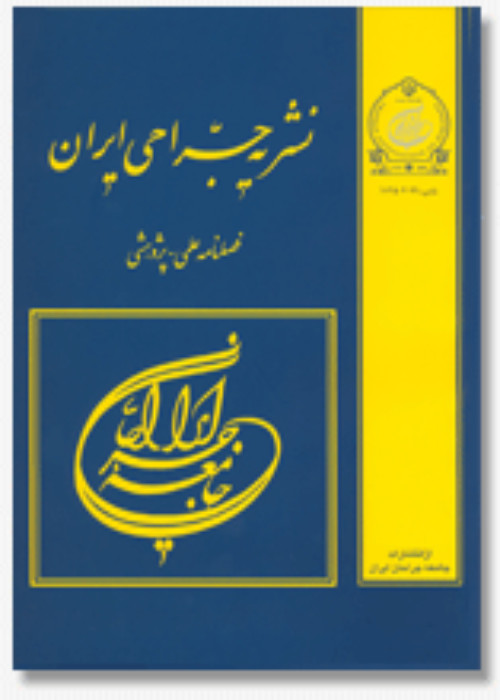Efficacy of Drain Placement in Laparoscopic Cholecystectomy
Abstract:
Introduction &
Objective
Laparoscopic cholecystectomy is the safe and gold standard treatment in most patients with gallbladder diseases worldwide. Routine drain placement after laparoscopic cholecystectomy is controversy and most surgeons use it to prevent collection of blood, bile or pus. But drains can cause pain, infection, more prominent scar and delay in discharge of patients. This study assessed drain efficacy in laparoscopic cholecystectomy by assessment of volume and contents of drained fluid, and its advantages and disadvantages. Materials and Methods
This study was performed on 92 patients in Dr. Shariati hospital during 2007-8 underwent urgent or elective laparoscopic cholecystectomy. Demographic characteristics of patients, indication of surgery, duration of surgery and postoperative pain and events were collected. Value and content of drained fluid, and postoperative hospital stay were recorded and analyzed. Results
Drains were fixed in 59 (64.1%) patients and 33 (35.9%) patients did not have drain. Mean drained fluid was 40.4 ± 28.4 milliliters (range: 10-300 cc). Fluid was serous or serosanguineous in all cases, no fresh blood or bile in any case. In most cases (90%) fluid volume was less than 100 cc. None of the patients without drains suffered abdominal collection, percutaneous drainage or repeated surgery. Pain was more in patients with drains. Using visual analogue score (0-10), pain was scored 1.5±1.2 in patient without drain and 2.2±1 in patients with drain, 12 hours after surgery (P-value=0.018). Mean postoperative hospital stay was 1.3±0.5 days in patients without drain and 1.8± 0.6 days in the other group ((P-value<0.0001). Conclusions
It seems that drains in laparoscopic cholecystectomy evacuate little insignificant fluid. Drain placement can cause more pain, longer admission period and more cost. It is recommended not to place drains were not necessary cases. Reducing use of drains through correct clinical judgment can decreases its disadvantages such as pain, infection, patient anxiety, longer admission period and costs.Language:
Persian
Published:
Iranian Journal of Surgery, Volume:16 Issue: 2, 2008
Page:
73
magiran.com/p610316
دانلود و مطالعه متن این مقاله با یکی از روشهای زیر امکان پذیر است:
اشتراک شخصی
با عضویت و پرداخت آنلاین حق اشتراک یکساله به مبلغ 1,390,000ريال میتوانید 70 عنوان مطلب دانلود کنید!
اشتراک سازمانی
به کتابخانه دانشگاه یا محل کار خود پیشنهاد کنید تا اشتراک سازمانی این پایگاه را برای دسترسی نامحدود همه کاربران به متن مطالب تهیه نمایند!
توجه!
- حق عضویت دریافتی صرف حمایت از نشریات عضو و نگهداری، تکمیل و توسعه مگیران میشود.
- پرداخت حق اشتراک و دانلود مقالات اجازه بازنشر آن در سایر رسانههای چاپی و دیجیتال را به کاربر نمیدهد.
In order to view content subscription is required
Personal subscription
Subscribe magiran.com for 70 € euros via PayPal and download 70 articles during a year.
Organization subscription
Please contact us to subscribe your university or library for unlimited access!


